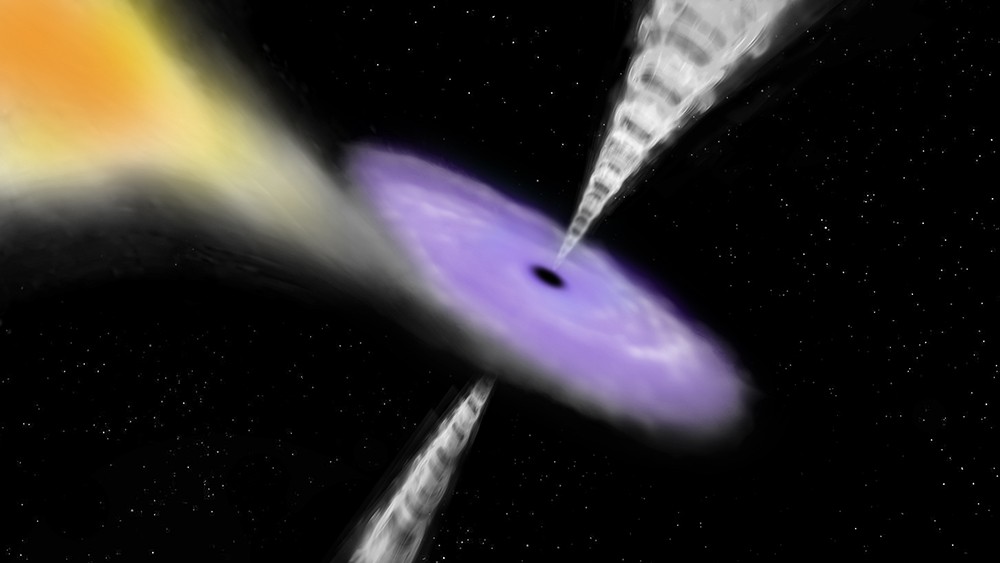
The Cambrian explosion, the evolutionary "big bang" that led to the emergence of a trove of complex life forms, was caused by multiple events, researchers argue.
Genetic changes allowing for complex body plans combined with rising sea levels and an influx of chemicals into the ocean probably created the unique conditions needed to set off the Cambrian explosion, researchers argue in a perspectives paper published today (Sept. 19) in the journal Science.
"There was this cascade of events," said study co-author Paul Smith, a paleobiologist at the University of Oxford's Museum of Natural History. "You can see how one process might feed into one another and possibly amplify it as it feeds back."
Evolutionary big bang
About 530 million years ago during the Cambrian Period, the diversity of life on Earth exploded. The first sea-faring predators and prey emerged, animals developed strange and diverse body plans and evolved hard exoskeletons. A recent study revealed that life evolved during the Cambrian Period at a rate about five times faster than today. [Cambrian Creatures: Images of Primitive Sea Life]
Scientists have proposed everything from genetic changes to a starburst in the Milky Way to explain the explosion in diversity.
"There are well over 30 hypotheses out there for the Cambrian explosion," Smith told LiveScience.
Get the world’s most fascinating discoveries delivered straight to your inbox.
Smith and his colleagues looked through all the existing research to see what could explain the evolution of complexity from relatively simple life forms that existed prior to the Cambrian explosion.
"Prior to this, a typical ecosystem would have been a microbial mat with a few things sitting on top," Smith said.
At that time, animals couldn't eat large particles of food, and there were no food webs with predators chasing prey.
Multiple factors
The researchers found genetic changes were needed to get the ball rolling toward an explosion of life. By estimating mutation rates, biologists have concluded the genes that code for complex, easily adaptable, bilateral body plans — a necessary precursor for diverse life forms — likely evolved 150 million years prior to the Cambrian Period. (Some evidence suggests this evolution may have occurred closer in time to the Cambrian explosion.)
But genetic changes alone couldn't explain the explosion in diversity.
The rise of sea levels and the flooding of flat, shallow areas of the continents may have served as triggering events. The flooded areas would have provided vastly more habitat for organisms, and the contact between the eroded rock surface and the seawater would have infused minerals, such as calcium and strontium, into the oceans.
Those minerals are toxic to cells, so animals would've needed a way to excrete them.
The animals then would have evolved the ability to incorporate those minerals into their exoskeletons, enabling much more complicated body plans, predation and more modern food webs.
The idea that many factors led to the Cambrian explosion is pretty widespread, said Robert Gaines, a geologist at Pomona College in California, who was not involved in the study.
"I think there are very few people who wouldn't wholeheartedly agree with that," Gaines told LiveScience.
Though the Cambrian explosion is described as a big bang, it was a rather drawn-out affair occurring over 20 million years, Michael Lee, a researcher at the South Australian Museum at the University of Adelaide, who was not involved in the study, wrote in an email.
"One would expect that a range of complex ecological and abiotic drivers might have acted at different times throughout the period," Lee said.
Follow Tia Ghose on Twitterand Google+. Follow LiveScience @livescience, Facebook & Google+. Original article on LiveScience.

Tia is the editor-in-chief (premium) and was formerly managing editor and senior writer for Live Science. Her work has appeared in Scientific American, Wired.com, Science News and other outlets. She holds a master's degree in bioengineering from the University of Washington, a graduate certificate in science writing from UC Santa Cruz and a bachelor's degree in mechanical engineering from the University of Texas at Austin. Tia was part of a team at the Milwaukee Journal Sentinel that published the Empty Cradles series on preterm births, which won multiple awards, including the 2012 Casey Medal for Meritorious Journalism.


